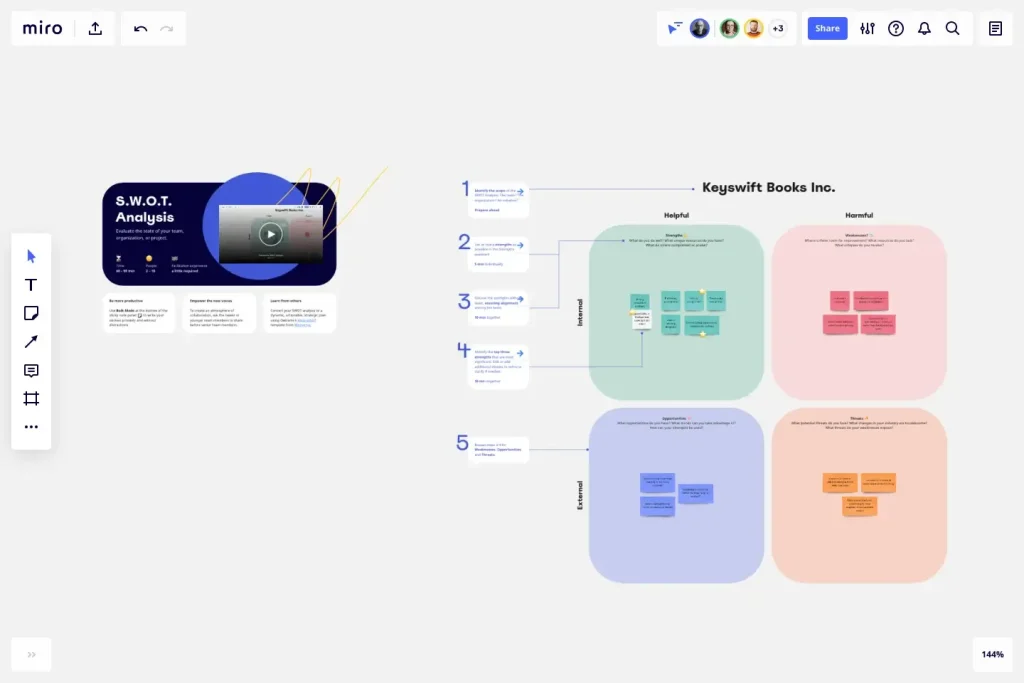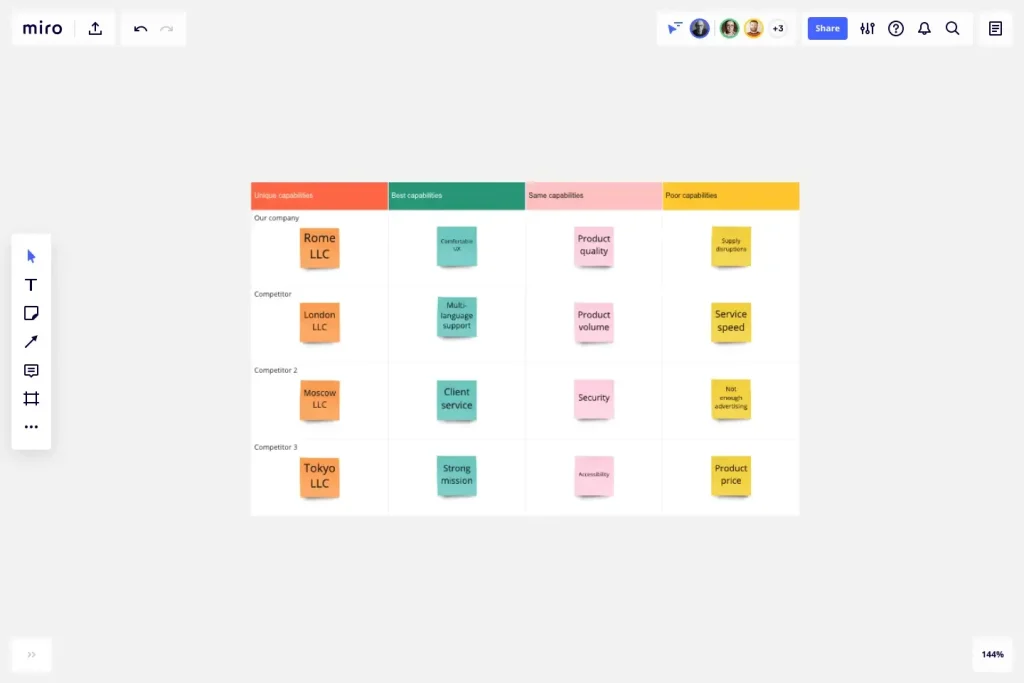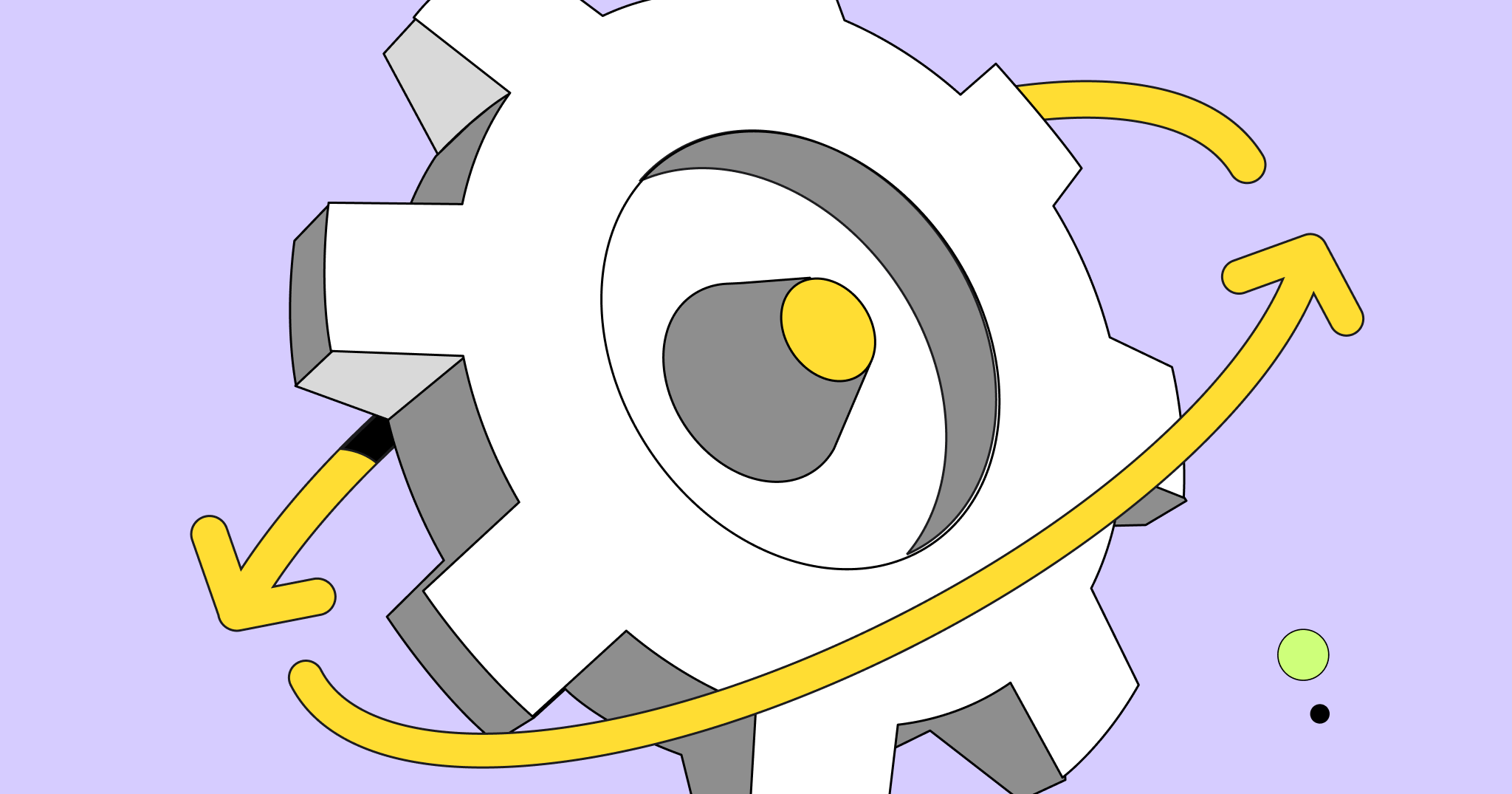Well-known economic thinker Paul Krugman defines two key principles of economics. The first: $100 bills don’t lie in the street for long. In other words, people respond to incentives. The second: The economy is a closed system. Every sale is also a purchase.
To put it another way, supply and demand are closely linked. Any change to one is also a change to the other. Because of incentives, if demand increases, there will be a rush to fill it. That’s where your business can profit — but only if you’re prepared.
This article will teach you how to build a supply and demand diagram that helps you profit off shifts in the economy.
What is supply and demand?
The relationship between supply and demand is the most basic principle underlying every concept of economics. Working together, these two measurements determine the price of every good and service you might find for sale.
Supply describes how many units of a particular good are available in any given economy. Demand describes how many units of that good people in the market want to buy.
Supply and demand are simple enough on their own. The trick is understanding how they interact. It’s not as easy as saying they have an inverse relationship because it’s completely possible for both supply and demand to go up or down at the same time.
Instead, as economists describe it, supply and demand always reach equilibrium. To understand that, let’s take a look at the supply and demand diagram.

The horizontal axis on the supply and demand diagram represents quantity. The vertical axis represents price.
The supply curve is plotted as a line with an upward slope, pointing up and to the right. If the available quantity of the good increases, the supply curve shifts right. If quantity decreases, the supply curve moves leftThe demand curve is plotted as a line with a negative slope, pointing down and to the right. If the quantity demanded increases, the downward-sloping demand curve moves right. If demand decreases, the curve moves left.
The two curves intersect at the point of equilibrium. That, at least according to microeconomics, represents the real world — the actual price or equilibrium price of the good.
Let’s run through an example. Imagine a man named John opens a food truck where he sells burgers. He has enough ingredients to make 100 burgers per day and sells each one for $5, netting him enough to make a profit.
Now imagine John’s ingredient supplier runs into problems and can only provide him with enough ingredients to make 80 burgers per day. However, his customers are loyal, so demand stays the same. To find the new price John should charge for his burgers, move the supply curve left while keeping the demand curve in place.

The new graph tells John he should be charging an equilibrium price of $6 per burger.
Let’s give John some good news. A local paper gives his food truck a glowing review, and suddenly, more people are interested in trying it. Demand has gone up, so the demand curve shifts to the right.
But he still only has enough ingredients to make 80 burgers a day. To reflect reality, we need to move the supply curve, so the equilibrium quantity is at the same spot on the horizontal axis.

Quantity demanded stays the same, but the market equilibrium price increases. This diagram reflects a reality we’ve all seen: the more popular something is, the more expensive it tends to get.
No goods in the economy have a fixed value — if someone will pay $100 for something, it’s worth $100. Any given price is determined by supply and demand, not by intrinsic worth. The supply and demand diagram helps us understand that.
What is a supply and demand diagram used for?
Now that you know how to plot a basic supply and demand diagram, what can you use it for?
Unless it’s managed to get a complete monopoly, every business must submit to market forces and the laws of supply and demand.
The previous section talked about how supply and demand interact to create price changes. Still, it’s vital to remember that it also works in reverse: if price or quantity change, supply, and demand find a new market equilibrium.
In other words, consumers know how much they’re willing to spend on the products you provide. If you charge a higher price than the market equilibrium price, demand will fall as people go to your more affordable competitors. But if your price falls too low, you may fail to make a profit.
By understanding supply and demand, you put yourself in a position to take advantage of opportunities while also anticipating threats and pitfalls.
If something happens in the world to increase demand for your products, you can raise prices to match and increase your profits without raising them so much that demand starts to fall again.
Conversely, if there’s a drop in enthusiasm for your products, you’ll need to calculate the optimal price level to staunch the bleeding.

Supply and demand are so much more complicated than we’ve got time to discuss here, but even knowing the basics gives you a powerful set of tools for competing in your chosen market.
Of course, the faster you work, the more able you’ll be to stay ahead of market movements.
For more advantages of using a supply and demand diagram, see the “use cases” section below.
How to fill in a supply and demand diagram
Start by selecting the Supply and Demand template with Miro’s suite of diagramming tools. Add every stakeholder to the new board so you can collaborate remotely, in real-time or asynchronously.
1. Draw and label your axes
Recall from our explanation above that the x-axis represents quantity and the y-axis represents price. Using Miro’s click-and-drag interface, add text labels that make it clear which axis represents what.
Choose units that make sense for your particular industry. If you sell consumer packaged goods, the quantity might be in the hundreds, with prices in the single digits.
On the other end of the spectrum, if you sell enterprise software, you might sell less than one hundred units at a much higher equilibrium price.
2. Add your starting supply and demand curves
Plot your supply curve according to the Law of Supply.
The Law of Supply states that when the market price of a unit goes up, firms will produce more of that unit since it represents a greater potential profit.
Choose two prices, and forecast how many units you would produce at each one. Plot your straight market supply curve through those two inputs. Data from your competitive market analysis can help you make these forecasts.
Plot your demand curve according to the Law of Demand. The Law of Demand states that when the market price of a good goes up, fewer consumers will purchase units of that good.
The slope of the demand curve should be the inverse of the supply curve’s slope. You only need two data points to plot it: the number of units sold in a test market and the price each unit sold for.
3. Label the equilibrium point
You should now have two intersecting lines on your graph. Locate the intersection and add straight lines pointing down to the x-axis and across to the y-axis. Label the price point and quantity of units.
You can quickly add and remove shapes to interpret parts of the model. It also makes it easy to design and label the graph when you need to show it to someone else for buy-in.
4. Move the lines in response to economic events
Now that you’ve finished your supply and demand diagram, you can use it to project a new equilibrium quantity and price and see how your pricing and production should respond to changes in the market.
Mechanically, it’s as simple as clicking one of the curves and dragging it to the left (for a decrease in supply/demand) or the right (for an increase). But it’s important to understand what those movements mean in reality.
For example: if you move the market supply curve to the right to show increased supply, the equilibrium point moves down the y-axis. That represents the way consumers are less willing to pay when the price rises on a common product. If one firm overcharges for it, they can find a better price somewhere else.
This assumes that you aren’t producing a completely unique good or service. Even if you are, it’s still a good idea to base your pricing on something at least slightly comparable. Otherwise, you risk misreading the market and losing out on profits.
Supply and demand diagram use cases
We’ve already hinted at some of the many use cases for a supply and demand diagram, but in this section, we’ll dive into some details. Here are four options you can explore once you have your supply and demand chart set up in your collaborative online whiteboard.
1. Determine a market entry price
Every business should inspect a supply and demand diagram before they bring any product to market. If you enter the market at the wrong price point, you risk either stunting your growth or torpedoing customer goodwill in a critical time period.
You should already have conducted a SWOT analysis to figure out how you’ll enter the market, but this approach requires a few more hard numbers.
Create diagrams that correspond to your industry, your niche within that industry, and your geographic location.
Even in the age of e-commerce, geography is important and is consistently overlooked. General wealth, distance from raw material sources, climate, and a vast array of other factors play a role in supply and demand.
While investigating these diagrams, you should also be conducting closed-door market research to determine what prospective customers are willing to pay for your product.
Your ultimate goal is to choose an entry price that creates profits for your company without driving off too many customers.
An equilibrium quantity or price is rarely a perfectly fixed point — there’s some leeway on either side that you can experiment with to find that ideal balance (see “elasticity” below).

2. Locate market imperfections
Every economic model is necessarily imperfect. Economics is the study of how human beings make decisions on a large scale. That’s never going to be perfectly precise.
Over time and distance, the laws of supply and demand work. But each individual market breaks with them in fascinating — and potentially profitable — ways. If you can figure out how your market deviates from the norm, you can exploit those characteristics.
One way to determine your strengths in the market is to use our competitive analysis template.
The competitive analysis template allows you to analyze the competitors in your industry and gain insights into their capabilities.
One example of a market deviation that shows up again and again in modern life is the notion of “economies of scale.” Economies of scale appear when a firm grows large enough that it can absorb costs other firms might not be able to weather.
A large corporation with stores in multiple states can price its products lower than the equilibrium point, counting on other revenue sources to make up the difference.
Since lower prices increase demand, that store now has an advantage over others in the area, especially if consumer income is low.
Anytime you see prices or quantities that don’t match the supply and demand diagram, you’ve found an imperfection you might be able to exploit.

3. Decide how to market your products
Demand doesn’t create itself. It would be great if a product needed nothing but itself to bring in customers, but unless you’re very lucky, you’ll need a marketing plan.
Your supply and demand diagram can help you decide whether your product should compete based on price, value, or a combination of the two.
For example, you might discover that because of your lower costs of production, you can price your product lower than your competitors are selling it for without eating all your profits. In that case, your marketing should focus on your low, low prices.
If you can’t do that, you’ll need to determine a unique value proposition that doesn’t express itself on the supply and demand chart.
Economists call that an externality — any value in a transaction that isn’t reflected in that transaction’s cost. A PEST analysis can help you translate those externalities into numerical values.
To put it simply: you have to offer either a lower price or a better product. Your supply and demand chart will tell you which one you should go for.
4. Model price elasticity of demand
Elasticity is another key term in microeconomics. There are many types, but as a small business owner, you’ll probably be most interested in price elasticity of demand. It refers to how much the price of a good can change before it starts having an impact on the quantity demanded.
If a good is elastic, an increase in price will decrease demand at almost the same rate and vice versa. But if it’s inelastic, people will continue buying it at roughly the same rate across a wide range of different prices. The classic example is gasoline.
Every business’s dream is to achieve inelastic pricing for its goods. If your prices aren’t at the top of the inelastic range, you aren’t making a profit as efficiently as you could be. Consider raising prices to make better use of your stock.
You might also consider the elasticity of supply, which measures how quickly supply can change to complement changes in demand or price.
Start your next supply and demand diagram now
Supply and demand is the fundamental concept of economics. If you want to attract customers, gain a competitive edge, and strategize for long-term growth, you can’t get away with not understanding it.
Working together, you and your team can make math-backed decisions based on your understanding of supply and demand.



